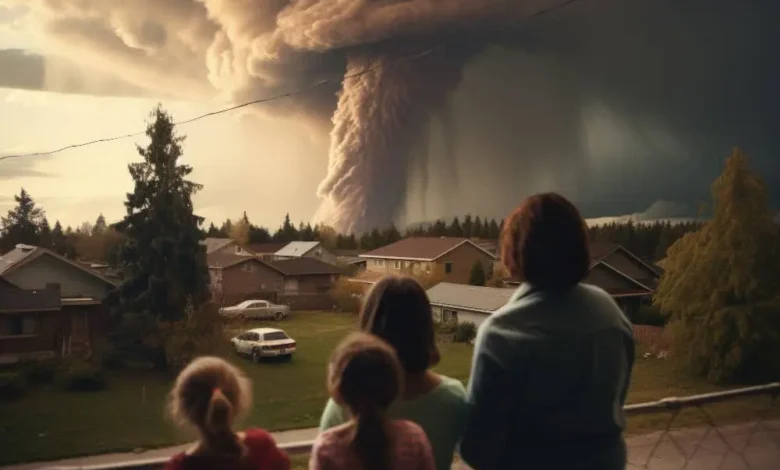Does Home Insurance Cover Earthquake Hurricane and Tornado Damage?
Learn if home insurance covers earthquake, hurricane, and tornado damage, understand the home insurance hurricane deductible, and find out how to protect your home.

Does Home Insurance Cover Earthquake Hurricane and Tornado Damage? A Comprehensive Guide for U.S. Citizens.
Natural disasters like earthquakes, hurricanes, and tornadoes can cause significant damage to homes, leading to devastating financial loss for homeowners.
While many U.S. citizens rely on home insurance for protection, there’s often confusion about whether standard policies cover these disasters and the steps homeowners need to take to recover from such events.
In this article, we’ll explore in detail how home insurance policies address damages caused by earthquakes, hurricanes, and tornadoes.
We’ll also discuss additional costs, such as the home insurance hurricane deductible, and provide guidance on the recovery process when a disaster strikes.
Finally, we will clarify the role of the U.S. government in disaster relief and whether there are sufficient funds to cover large-scale damages.
What Does Standard Home Insurance Cover?
Homeowners insurance is designed to cover a wide range of risks, including damage caused by fires, theft, and certain weather-related events like wind and hail.
However, many homeowners assume that their standard insurance automatically covers all types of natural disasters, which is not the case.
Earthquake Coverage
Standard home insurance policies do not typically cover earthquake damage. This means that if your home is damaged or destroyed by an earthquake, you will not receive any compensation from your insurance provider unless you have purchased a separate earthquake insurance policy.
Hurricane and Tornado Coverage
Standard home insurance generally covers wind damage caused by hurricanes and tornadoes. This includes damage to the structure of your home, as well as personal property inside your home.
However, flood damage, often caused by the storm surges or heavy rains associated with hurricanes, is not included in most home insurance policies.
For homeowners in hurricane-prone areas, such as Florida, Texas, and Louisiana, insurers often impose a home insurance hurricane deductible, which is a separate deductible specifically for hurricane-related damage. We’ll discuss this deductible in detail later in the article.
Does Home Insurance Cover Earthquake Damage?
As mentioned, standard home insurance policies do not cover damages caused by earthquakes. Earthquake insurance must be purchased as a separate policy or as an endorsement (add-on) to your existing home insurance policy.
What Does Earthquake Insurance Cover?
Earthquake insurance typically covers the following:
- Dwelling coverage: This pays for repairs to the structure of your home.
- Personal property coverage: This covers damage to your belongings, such as furniture, electronics, and clothing.
- Loss of use: This reimburses living expenses if you need to temporarily relocate while your home is being repaired.
Earthquake Deductibles
Earthquake insurance policies usually have a percentage-based deductible. This means that your deductible is a percentage of your home’s insured value rather than a fixed dollar amount.
For example, if your home is insured for $300,000 and your earthquake deductible is 10%, you would need to pay $30,000 out of pocket before your insurance kicks in.
Given the high cost of earthquake insurance deductibles, it’s essential to weigh the risks if you live in an earthquake-prone area like California, Oregon, or Washington.
Does Home Insurance Cover Hurricane and Tornado Damage?
While earthquake damage requires a separate policy, hurricane and tornado damage is generally covered under standard home insurance policies—specifically for wind-related damages.
What Damages Are Covered?
- Wind damage: Home insurance will cover damage caused by high winds from hurricanes and tornadoes. This could include roof damage, broken windows, or a fallen tree hitting your house.
- Personal property damage: Your policy will also cover damage to personal belongings inside the home, such as furniture or electronics destroyed by wind or debris.
- Additional living expenses: If your home is uninhabitable after a hurricane or tornado, your policy will reimburse you for hotel stays, meals, and other necessary living expenses.
Flood Damage: What’s Not Covered
One of the most important things to remember is that home insurance does not cover flood damage. If your home is damaged by floodwaters during a hurricane, you will need a separate flood insurance policy to cover these damages.
Flood insurance is offered through the National Flood Insurance Program (NFIP) and can be purchased through private insurers.
Understanding the Home Insurance Hurricane Deductible
If you live in an area prone to hurricanes, your home insurance policy likely includes a hurricane deductible, which is different from your standard deductible.
This deductible only applies to claims related to hurricane damage, and it is usually a percentage of your home’s insured value rather than a flat amount.
How the Hurricane Deductible Works
- Percentage-based: The hurricane deductible is typically 1% to 5% of your home’s insured value. For example, if your home is insured for $250,000 and your hurricane deductible is 3%, you’ll need to pay the first $7,500 of repair costs before your insurance takes effect.
- Applies only to hurricanes: This deductible kicks in when the National Weather Service officially declares a hurricane in your area. Damage from other types of storms, such as tropical storms or severe thunderstorms, would be subject to your standard deductible.
How to Prepare for the Hurricane Deductible
If you live in a hurricane-prone state, it’s crucial to have savings set aside to cover your hurricane deductible. Keep in mind that this deductible can be quite high, especially for expensive homes, so make sure you have enough funds available to cover the initial costs of repairs.
Large-Scale Disasters: Are There Enough Funds to Cover the Damage?
In the aftermath of large-scale natural disasters like hurricanes, when thousands of homes are destroyed, there is often concern about whether insurance companies have enough funds to cover all claims.
How Insurance Companies Handle Large-Scale Disasters
Insurance companies plan for disasters by maintaining reinsurance—a type of insurance that insurers purchase to protect themselves from large losses.
This ensures that even in the case of massive hurricanes or tornado outbreaks, insurance companies will have the resources to cover widespread damage.
However, in extreme cases, the sheer scale of damage can cause delays in processing claims, and policyholders may need to be patient as insurers work through the high volume of claims.
Government Assistance in Natural Disasters
In addition to insurance coverage, the U.S. government often provides disaster relief through the Federal Emergency Management Agency (FEMA).
FEMA offers grants and low-interest loans to help homeowners repair their homes and recover from major disasters.
What to Do After a Hurricane or Tornado: Steps to Recover
If your home is damaged or destroyed by a hurricane or tornado, it’s essential to act quickly to begin the recovery process. Here’s a step-by-step guide for homeowners dealing with natural disaster damage:
1. Ensure Safety First
Before doing anything else, make sure that you and your family are safe. If your home has suffered significant damage, stay away from the property until local authorities confirm it is safe to return.
2. Document the Damage
Take photographs and videos of the damage to your home and property. This documentation will be crucial when filing your insurance claim.
3. Contact Your Insurance Provider
Notify your insurance company as soon as possible to start the claims process. Be prepared to provide detailed information about the damage and submit your photos and videos as evidence.
4. Secure Temporary Housing
If your home is uninhabitable, check your policy’s additional living expenses coverage to find out if your insurer will cover the cost of temporary housing.
5. Hire Licensed Contractors
Once your claim is approved, hire licensed contractors to begin repairs. Always ensure that you get multiple quotes and check contractor references to avoid being overcharged.
6. Apply for Government Assistance
If your insurance coverage is insufficient, apply for FEMA assistance. You can apply online or visit a local FEMA Disaster Recovery Center for help.
Conclusion: The Importance of Comprehensive Home Insurance Coverage
Natural disasters like earthquakes, hurricanes, and tornadoes can strike at any time, leaving homeowners with significant damage and repair costs. Understanding what your home insurance covers—and what it doesn’t—is essential for financial protection.
While earthquake damage requires separate coverage, home insurance hurricane policies typically cover wind-related damage, though you may face a separate home insurance hurricane deductible.
Tornadoes are usually covered under standard policies, but flood damage requires additional insurance through the NFIP.
In the aftermath of large-scale disasters, homeowners may face delays in claims processing, but insurance companies are equipped with reinsurance to handle widespread damage.
For those needing additional assistance, the U.S. government, through FEMA, provides disaster relief in the form of grants and loans.
By ensuring that you have the right insurance coverage in place and understanding how deductibles work, you can protect your home and finances from the potentially devastating effects of natural disasters.
Be sure to regularly review your policy, consider additional earthquake or flood coverage if needed, and prepare financially for any disaster-related costs that may not be fully covered by your home insurance.





